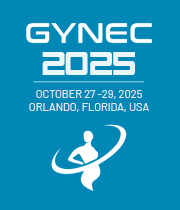Title : Surgical management of endometriosis in a community hospital of a low socioeconomic area
Abstract:
Study Objective: To evaluate the perioperative and long-term outcomes of surgical management for patients with endometriosis at a community hospital in a low socioeconomic area.
Design: Retrospective case series study.
Setting: Academic medical center.
Patients: Women who underwent surgical management for endometriosis.
Interventions: A total of 37 patients underwent surgical management for endometriosis between October 2022 and October 2024. Thirty-six patients were followed up for 1 to 24 months. All surgeries were performed by Dr. Wang, with assistance from Dr. Farkas, when bowel resection was necessary.
Measurements and Main Results: Among the 37 cases of surgical treatment for endometriosis, 17 (46%) were identified incidentally, while 20 (54%) were clinically diagnosed. Twelve (32%) cases were classified as stage I-II and 25 (68%) as stage III-IV. Surgical approaches included laparoscopy in 22 (59%) cases, robotic assistance in 12 (32%), and two cases were converted from laparoscopy to laparotomy. Various advanced techniques were utilized during surgeries, including ureterolysis, enterolysis, diaphragm resection, bowel shaving, bowel disc resection, appendectomy, and hypogastric nerve sparing. Intraoperative complications included one case of ureteral thermal injury and one case of bladder laceration. Postoperative complications consisted of one case of pyelonephritis and one case of incisional cellulitis. There were no complications related to urinary or bowel functional disorders postoperatively. Among the 18 patients who regularly used pain medication before surgery, 15 patients discontinued pain medications, while three reduced their usage after surgery. Nine patients are actively trying to conceive, and one patient conceived spontaneously. Sixteen patients are receiving various forms of hormonal suppression.
Conclusion: With excellent skills and collaboration, the surgical management of endometriosis resulted in minimal complications and optimal postoperative outcomes, significantly benefiting patients in a low socioeconomic area.



